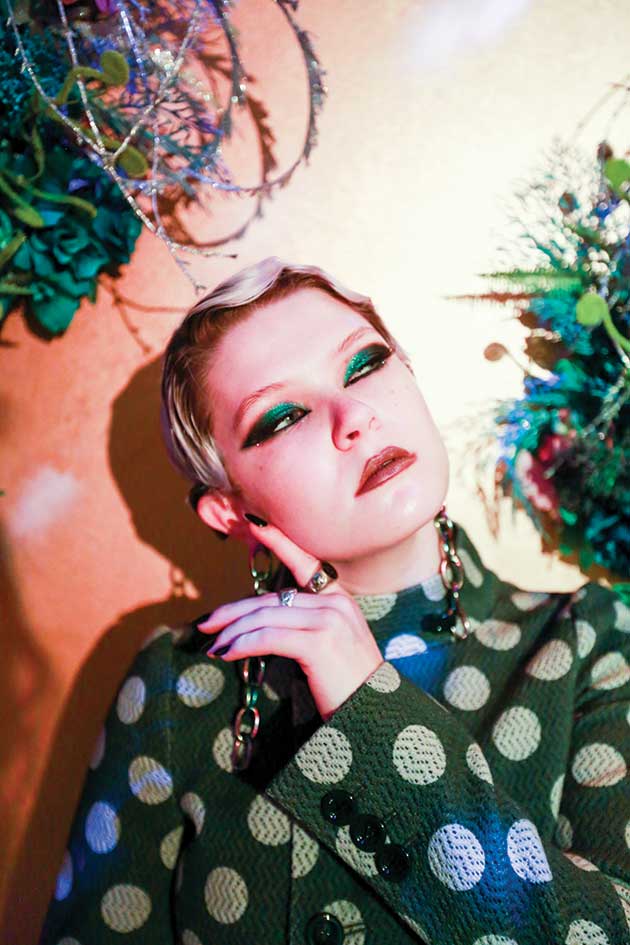
When she was in the sixth grade, Bailey Turfitt's father handed her a special effects makeup kit for Halloween.
"He looked at me and said, 'I want to see what you do with it,'" she says.
And she made the most of it. That kit launched a passion that made Turfitt, now a senior biology major, a sought-after makeup artist for events and photo shoots in Dallas. She uses makeup to express herself and it has helped over the last couple of years as Turfitt, who is deaf, underwent three surgeries.
"To continue to do art keeps me grounded," she says. "This is who I am no matter what happens."
A different world
Turfitt makes her subjects look like they belong to another world.
She adorns flower crowns with LED lights, skewers or candles. She drops colored eye drops so her subject looks like he's crying blue and red tears. She scatters crystals over bodies.
She'll turn people into Zodiac signs and horror movie victims. For one project with Raw Artists, a Dallas art organization that produces live events, she imagined Beatles tunes as people. "Lucy in the Sky with Diamonds" was painted blue and pink with crystals, and "Eleanor Rigby" was holding "the face that she keeps in a jar by the door."
"It was like seeing those songs come to life," Turfitt says.
The Beatles characters roamed around the Oaktopia festival in Denton a few years ago, snapping pictures with concert-goers. Her other work is seen on revelers at Sweet Tooth Hotel in Dallas, as well as in freelance photo shoots. Most people find her through her Instagram feed deaf.dead.girl.
Her models often tell her, "You make me feel so cool."
"That's a goal of mine -- to make people feel good about themselves," she says.
Finding strength
And the makeup makes Turfitt feel better too.
"It helps get emotions across," she says. "Being deaf can be enclosing."
She often feels like she's in a fishbowl when she can't communicate or doesn't know what's going on.
Turfitt was born without hearing because her vestibular aqueducts were enlarged. She can hear with the help of a hearing aid in her left ear.
In 2018, she underwent surgery for a cochlear implant. The surgery was "terrifying." She lost her balance and experienced facial paralysis for a while. While it improved her hearing, the implant tried to push its way out of her head, and she underwent a second surgery this summer. She also had foot reconstruction surgery when her left foot got a severe bunion, forcing her to stay in bed.
UNT's Office of Disability Access has helped her through the years by providing a notetaker for classes and installing flashing doorbells and flashing tornado sirens in her dorm room when she lived on campus. She also received help from the Callier Center for Communication Disorders, a nonprofit organization that helps raise money for hearing aids. She made a speech for the organization that can be found on YouTube.
Turfitt continued her studies -- majoring in biology, with a concentration in forensics, and taking up metalsmithing -- while dealing with the surgeries and her makeup gigs. After she graduates in spring 2020, she imagines working as a creative director for a magazine or working on Broadway shows. Or she may turn to metalsmithing or use her biology degree to work as a veterinary technician.
She's drawn strength from past experiences, like when people told her, "You talk really well for a deaf person." When she played the flute and saxophone in her high school band, people questioned her abilities.
"I had a lot of people doubt me," she says. "I got through it. I can do this. I am just as good as anyone else."
And she always has her makeup kit.
"I'm living through the projects and the projects live through me," she says.